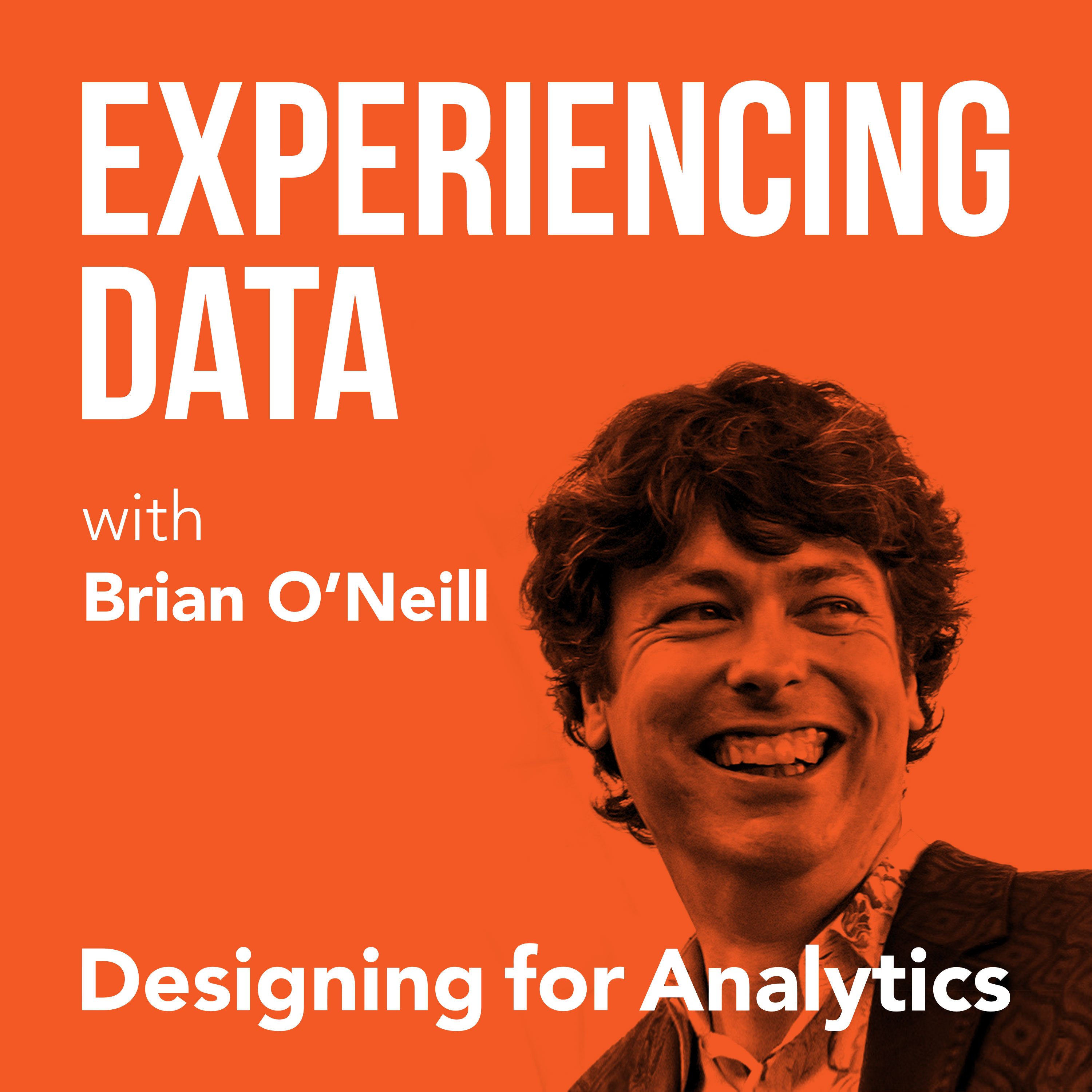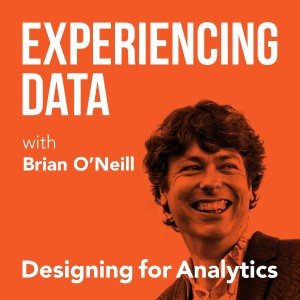

154.8K
Downloads
185
Episodes
Is the value of your enterprise analytics SAAS or AI product not obvious through it’s UI/UX? Got the data and ML models right...but user adoption of your dashboards and UI isn’t what you hoped it would be?
While it is easier than ever to create AI and analytics solutions from a technology perspective, do you find as a founder or product leader that getting users to use and buyers to buy seems harder than it should be?
If you lead an internal enterprise data team, have you heard that a ”data product” approach can help—but you’re concerned it’s all hype?
My name is Brian T. O’Neill, and on Experiencing Data—one of the top 2% of podcasts in the world—I share the stories of leaders who are leveraging product and UX design to make SAAS analytics, AI applications, and internal data products indispensable to their customers. After all, you can’t create business value with data if the humans in the loop can’t or won’t use your solutions.
Every 2 weeks, I release interviews with experts and impressive people I’ve met who are doing interesting work at the intersection of enterprise software product management, UX design, AI and analytics—work that you need to hear about and from whom I hope you can borrow strategies.
I also occasionally record solo episodes on applying UI/UX design strategies to data products—so you and your team can unlock financial value by making your users’ and customers’ lives better.
Hashtag: #ExperiencingData.
JOIN MY INSIGHTS LIST FOR 1-PAGE EPISODE SUMMARIES, TRANSCRIPTS, AND FREE UX STRATEGY TIPS
https://designingforanalytics.com/ed
ABOUT THE HOST, BRIAN T. O’NEILL:
https://designingforanalytics.com/bio/
Episodes

Tuesday Sep 05, 2023
Tuesday Sep 05, 2023
Today I’m joined by Vera Liao, Principal Researcher at Microsoft. Vera is a part of the FATE (Fairness, Accountability, Transparency, and Ethics of AI) group, and her research centers around the ethics, explainability, and interpretability of AI products. She is particularly focused on how designers design for explainability. Throughout our conversation, we focus on the importance of taking a human-centered approach to rendering model explainability within a UI, and why incorporating users during the design process informs the data science work and leads to better outcomes. Vera also shares some research on why example-based explanations tend to out-perform [model] feature-based explanations, and why traditional XAI methods LIME and SHAP aren’t the solution to every explainability problem a user may have.
Highlights/ Skip to:
- I introduce Vera, who is Principal Researcher at Microsoft and whose research mainly focuses on the ethics, explainability, and interpretability of AI (00:35)
- Vera expands on her view that explainability should be at the core of ML applications (02:36)
- An example of the non-human approach to explainability that Vera is advocating against (05:35)
- Vera shares where practitioners can start the process of responsible AI (09:32)
- Why Vera advocates for doing qualitative research in tandem with model work in order to improve outcomes (13:51)
- I summarize the slides I saw in Vera’s deck on Human-Centered XAI and Vera expands on my understanding (16:06)
- Vera’s success criteria for explainability (19:45)
- The various applications of AI explainability that Vera has seen evolve over the years (21:52)
- Why Vera is a proponent of example-based explanations over model feature ones (26:15)
- Strategies Vera recommends for getting feedback from users to determine what the right explainability experience might be (32:07)
- The research trends Vera would most like to see technical practitioners apply to their work (36:47)
- Summary of the four-step process Vera outlines for Question-Driven XAI design (39:14)
No comments yet. Be the first to say something!